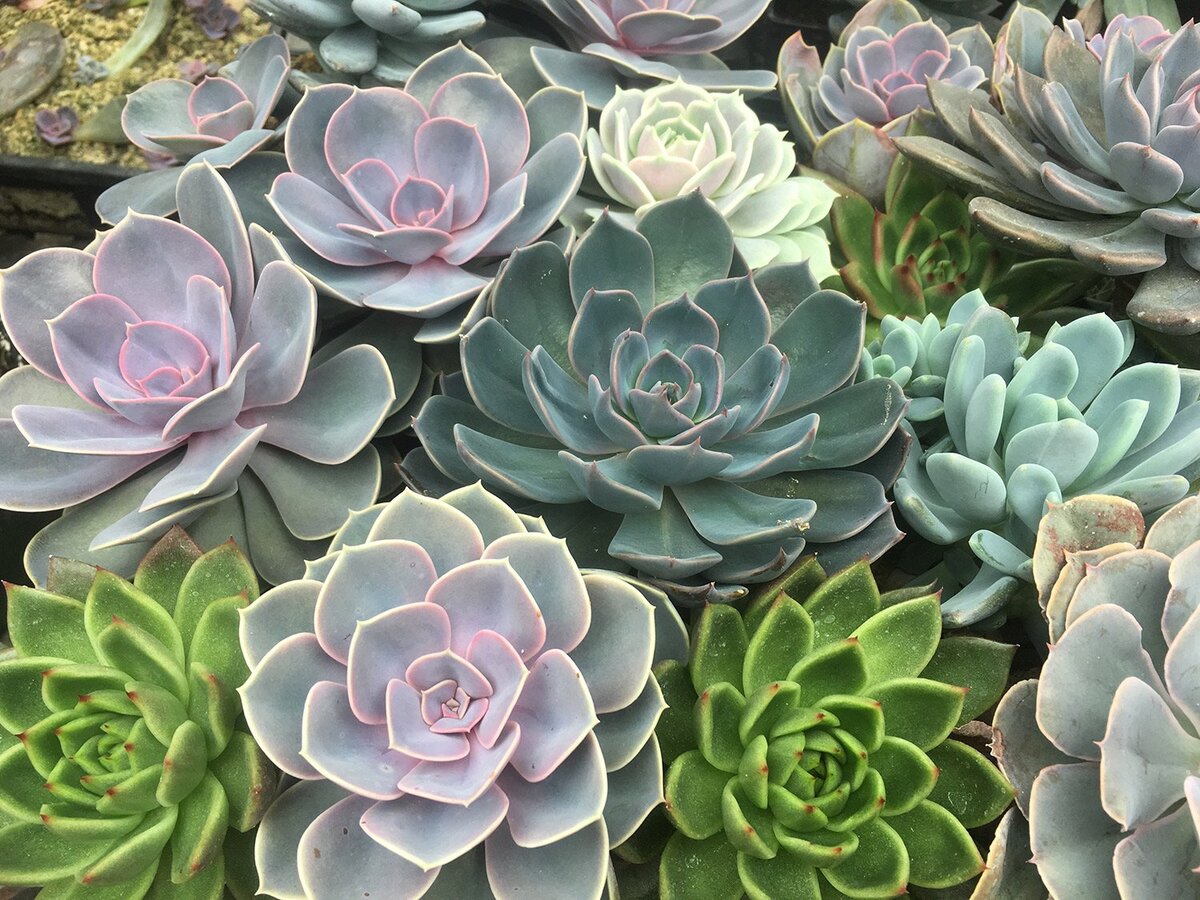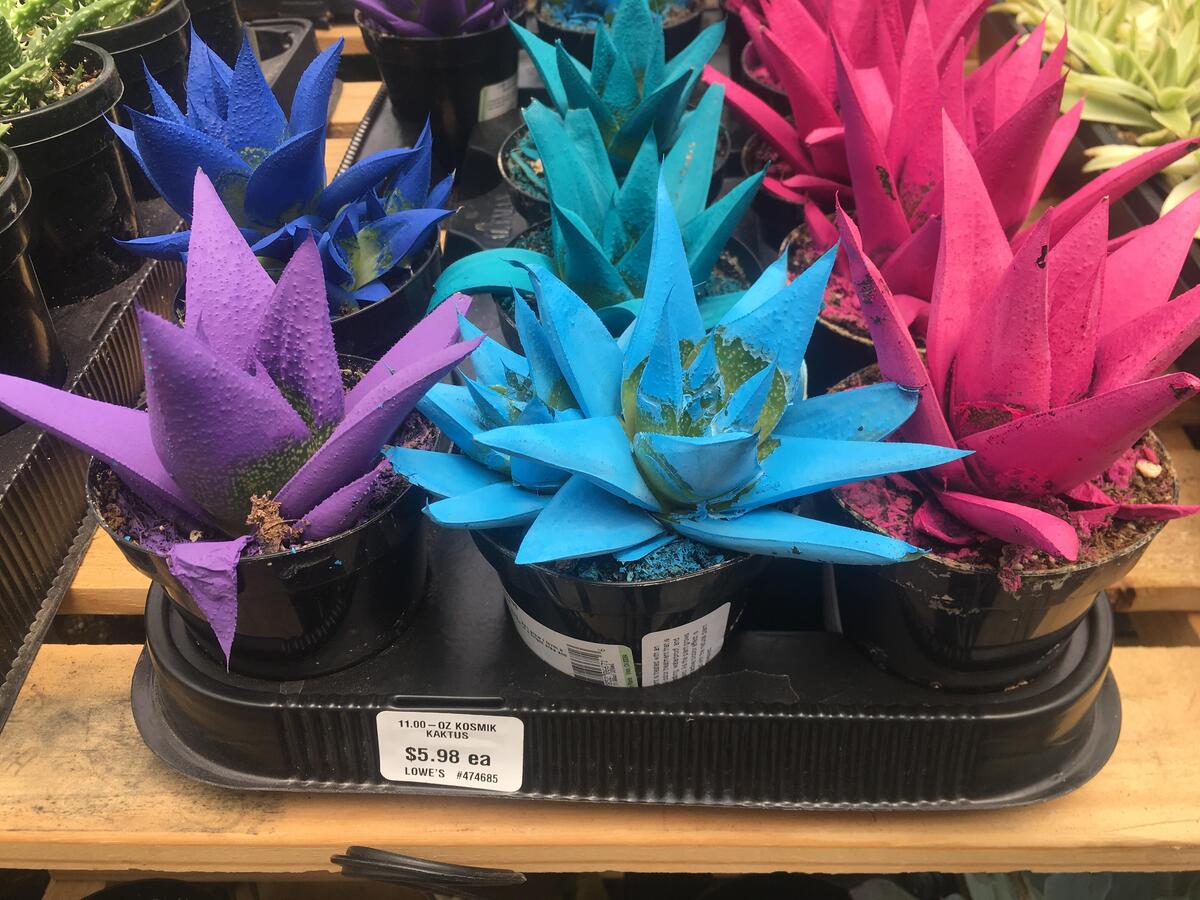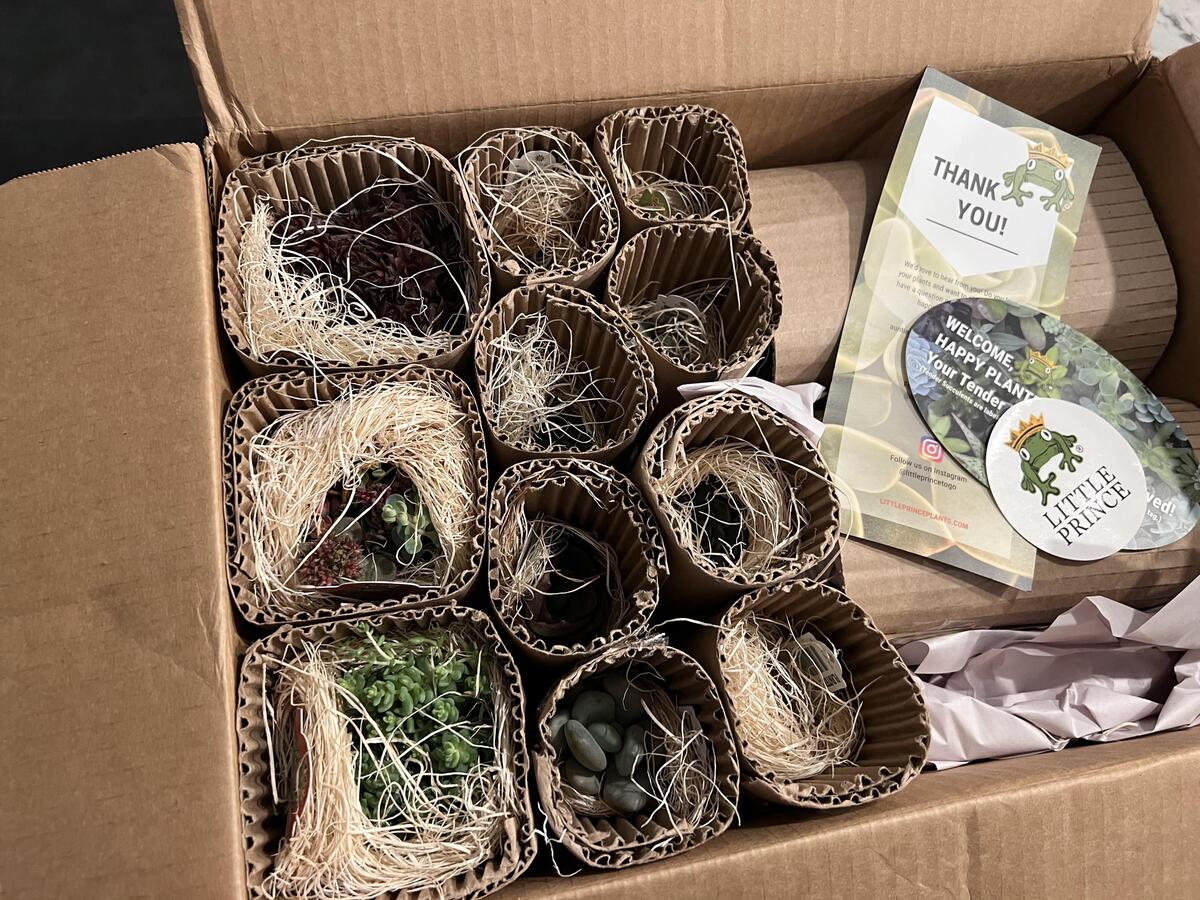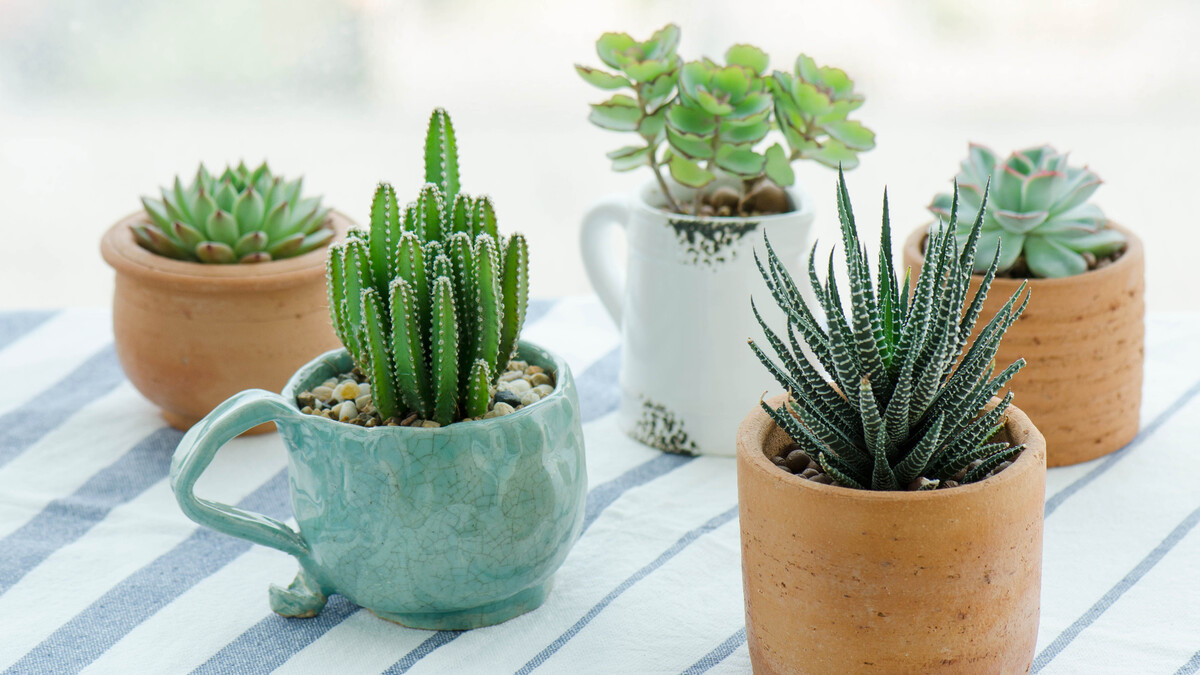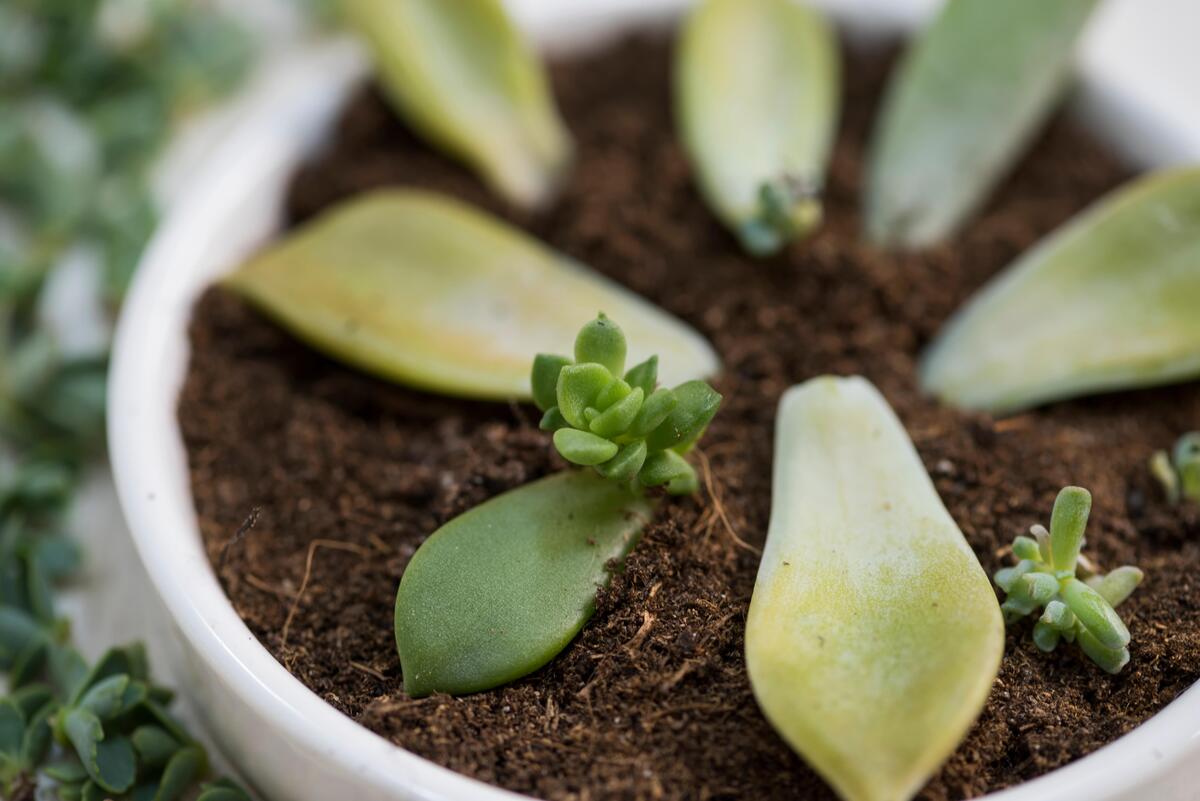Home>Gardening Techniques>DIY Projects>How To Decorate Succulents


DIY Projects
How To Decorate Succulents
Modified: February 9, 2024
Learn how to decorate succulents with these easy DIY projects. Enhance your indoor or outdoor space with creative and unique succulent designs.
(Many of the links in this article redirect to a specific reviewed product. Your purchase of these products through affiliate links helps to generate commission for Chicagolandgardening.com, at no extra cost. Learn more)
Table of Contents
- Introduction
- Choosing the Right Succulents for Decoration
- Selecting the Ideal Containers for Succulents
- Arranging Succulents in Containers
- Providing Optimal Lighting Conditions for Succulents
- Watering and Caring for Decorative Succulents
- Propagating Succulents for More Decoration Options
- Creative Ways to Display Succulents in Your Home
- Troubleshooting Common Issues with Succulent Decoration
- Conclusion
Introduction
Succulents have become increasingly popular in recent years as a versatile and low-maintenance option for home decoration. With their unique shapes, vibrant colors, and ability to thrive in various environments, succulents are a perfect addition to any DIY project.
Whether you’re a seasoned green thumb or just starting your gardening journey, decorating with succulents is a great way to add a touch of natural beauty to your living space. These resilient plants require minimal care and can be incorporated into a wide range of creative displays.
In this article, we will explore the art of succulent decoration and provide you with practical tips on how to choose, arrange, and care for them. Whether you’re looking to spruce up your office desk, brighten up your living room, or create a stunning centerpiece for a special event, succulents offer endless possibilities.
We will discuss various aspects of succulent decoration, from selecting the right succulents and containers to creating attractive arrangements and providing the necessary lighting and watering conditions. We’ll also delve into the world of propagating succulents and explore unique ways to display them in your home.
So, if you’re ready to embark on a DIY succulent project and bring a touch of nature into your living space, let’s dive into the wonderful world of succulent decoration!
Choosing the Right Succulents for Decoration
When it comes to selecting succulents for decoration, there are numerous options to choose from. Each variety has its unique characteristics that can complement different decor styles. Here are some tips to help you choose the perfect succulents for your DIY projects.
First, consider the size of the succulents. If you have a small space or want to create a mini garden, opt for petite succulent varieties like Echeveria ‘Topsy Turvy’ or Crassula ‘Baby Necklace’. On the other hand, larger succulents like Aloe Vera or Agave can make a statement in a bigger space or act as a focal point in an arrangement.
The color of the succulents is another important factor to consider. From pale greens to vibrant purples and even variegated variations, succulents offer a wide color palette that can complement any interior design scheme. For a classic and elegant look, consider using succulents with muted hues like Sedum ‘Autumn Joy’ or Haworthia ‘Zebra Plant’. For a pop of color, you can’t go wrong with varieties like Graptosedum ‘California Sunset’ or Echeveria ‘Lola’.
In addition to size and color, consider the texture of the succulents. Some succulents have smooth leaves, while others have spikes, fuzz, or unique patterns. Utilizing a mix of textures will add visual interest to your arrangements. For example, clustering Echeveria ‘Black Prince’ with the spikier Haworthia fasciata can create a captivating contrast.
Finally, think about the care requirements of the succulents you choose. While most succulents are easy to care for, some varieties require more attention than others. If you’re new to succulent gardening, start with low-maintenance options like Jade Plant (Crassula ovata) or Zebra Plant (Haworthia fasciata). If you’re up for a challenge, try more demanding varieties like Lithops or String of Pearls (Senecio rowleyanus).
By considering the size, color, texture, and care requirements of succulents, you can choose the perfect selections for your decoration projects. Remember to keep in mind the overall aesthetic you want to achieve and let your creativity shine. Now that you have an understanding of how to choose the right succulents, let’s move on to the next step: selecting the ideal containers for your plants.
Selecting the Ideal Containers for Succulents
Choosing the right containers for your succulents is crucial for both their aesthetics and well-being. The container you select should not only complement the overall style of your space but also provide the optimal growing conditions for the plants. Here are some factors to consider when selecting containers for your succulents.
First and foremost, ensure that the containers have proper drainage. Succulents are highly susceptible to root rot if they sit in waterlogged soil. Look for containers with drainage holes at the bottom to allow excess water to escape. If you find a container you love that doesn’t have drainage holes, you can create them yourself using a drill or place a layer of rocks or gravel at the bottom to help with drainage.
Next, consider the material of the containers. While there are numerous options available – such as clay, ceramic, plastic, glass, and even concrete – each material has its pros and cons. Clay pots are porous and promote better airflow to the roots, but they also dry out the soil more quickly. Plastic containers retain moisture but may not offer as much ventilation. Select containers based on your specific needs and the succulent varieties you are using.
The size of the containers is another crucial factor. Ensure that the containers are appropriate for the size of the succulents you’ve chosen. If the container is too large, it can lead to overwatering and may cause the roots to rot. On the other hand, if the container is too small, it can restrict the growth of the succulents. Aim for a container that provides enough room for the succulent’s roots to grow without being overly spacious.
Consider the aesthetics and style of the containers as well. Succulents offer a wide range of possibilities for creative displays, so feel free to experiment with different shapes, colors, and textures. You can go for a cohesive look by using a set of matching containers, or mix and match different containers for a more eclectic vibe. Additionally, consider the surrounding decor and choose containers that complement or contrast with the overall theme of your space.
Finally, don’t be afraid to think outside the traditional container options. Succulents can thrive in a variety of unconventional vessels such as teacups, mason jars, or even repurposed items like vintage tin containers or driftwood. Just make sure to modify the containers to provide proper drainage and adequate space for the succulents to grow.
By considering factors such as drainage, material, size, aesthetics, and creative options, you can select the ideal containers for your succulents. With the containers in place, it’s time to move on to the next step: arranging the succulents in a visually appealing manner.
Arranging Succulents in Containers
Once you have chosen the perfect succulents and containers, it’s time to arrange them in a way that creates an appealing and visually pleasing display. Here are some tips to help you arrange your succulents in containers.
First, consider the height and placement of your succulents. Start by placing taller or larger succulents in the back or center of the container to create a focal point. Then, arrange smaller or trailing succulents around them to add depth and visual interest. This layering technique creates a well-balanced and dynamic arrangement.
Next, think about the color palette and texture of your succulents. Group succulents with similar colors or complementary shades together to create harmony. Mix different textures such as smooth, spiky, and fuzzy succulents to add visual intrigue to your arrangement. Experiment with different combinations until you find a composition that you love.
When arranging your succulents, pay attention to the spacing between each plant. Overcrowding succulents can lead to poor airflow, increased risk of pests, and limited space for growth. Aim for a balanced arrangement with enough room for each succulent to breathe and expand comfortably.
Consider using a variety of container sizes and shapes to enhance the overall design. Grouping different-sized containers together can create an interesting visual contrast. You can also play with symmetry or asymmetry, depending on your personal preference, to achieve a unique and eye-catching display.
Remember to take into account the lighting requirements for each succulent when arranging them. If some succulents prefer more direct sunlight while others thrive in shaded areas, position them accordingly in the container. This will ensure that each plant receives the right amount of light for optimal growth.
As you arrange your succulents, don’t be afraid to experiment and get creative. Try out different arrangements, switch them up from time to time, and let your personal style shine through. Arranging succulents is a fun and artistic process, allowing you to express your creativity and create visually stunning displays.
By considering the height, color palette, texture, spacing, container variety, and lighting requirements, you can arrange your succulents in containers that are visually appealing and showcase their unique beauty. With your succulents beautifully arranged, it’s time to move on to the next phase: providing optimal lighting conditions for your plants.
Providing Optimal Lighting Conditions for Succulents
Proper lighting is essential for the healthy growth and development of succulents. These plants thrive in bright light conditions but can also be sensitive to intense sunlight. Understanding the lighting requirements of your succulents will help ensure their well-being. Here are some tips for providing optimal lighting conditions for your succulents.
Most succulents prefer bright, indirect light. Place your succulents near windows or in areas where they can receive at least six hours of bright, filtered sunlight per day. South-facing or east-facing windows are usually the best spots for succulents, as they receive ample sunlight without the intensity of direct afternoon sun.
While succulents love sunlight, be cautious of direct, scorching sunlight, especially during the summer months. Too much direct sunlight can cause sunburn or leaf discoloration. If you notice your succulents are becoming red or brown, or if you see signs of wilting or drying, it may be an indication that they are receiving too much direct sunlight. In such cases, consider moving them to a spot with more shade or using sheer curtains or blinds to filter the sunlight.
If you don’t have access to natural sunlight, you can use artificial grow lights to provide the necessary light for your succulents. LED grow lights are a popular choice as they are energy-efficient and emit the appropriate light spectrum for plant growth. Position the lights about six to twelve inches above the succulents and keep them on for about 12-14 hours a day to mimic natural daylight.
It’s important to observe your succulents closely to ensure they are receiving the right amount of light. If the leaves start stretching out or becoming leggy, it is a sign that they are not getting enough light and are reaching for more. In this case, you may need to move them to a brighter location or adjust the lighting setup accordingly.
Keep in mind that different succulent varieties may have slightly different lighting requirements. Succulents with colorful or variegated leaves often require more sunlight to maintain their vibrant colors, while succulents with dense leaves may tolerate lower light conditions. Consult specific care guides for the succulent varieties you have to ensure you are providing the appropriate lighting conditions.
By understanding the lighting needs of your succulents and providing them with bright, indirect light or artificial grow lights, you can create the optimal lighting conditions for their growth and ensure their vitality. With proper lighting in place, it’s time to move on to the next step: watering and caring for your decorative succulents.
Watering and Caring for Decorative Succulents
One of the main reasons succulents are cherished for home decoration is their ability to thrive under drought-like conditions. However, proper watering is still essential to keep decorative succulents healthy and vibrant. Here are some tips for watering and caring for your succulents:
Succulents are adapted to arid environments and store water in their leaves, stems, or roots. As a result, they can handle periods of drought and prefer to be underwatered rather than overwatered. Only water your succulents when the soil is completely dry. This will prevent root rot and ensure the health of your plants.
When watering, aim for a thorough soak. Water the soil until you see water draining out of the drainage holes at the bottom of the container. This ensures that water reaches the roots and promotes healthy growth. However, avoid leaving your succulents in standing water, as it can cause root rot.
Establish a watering schedule based on the specific needs of your succulents and the environmental conditions they are in. Factors such as humidity, temperature, and light intensity can affect the frequency of watering. Generally, during the growing season (spring and summer), succulents may need watering once every 1-2 weeks. In the dormant season (fall and winter), succulents require less frequent watering, typically every 3-4 weeks.
When in doubt about whether to water, it’s better to err on the side of underwatering. Succulents are more tolerant of dry conditions than excess moisture. If you notice leaves becoming mushy, yellowing, or dropping, it may be a sign of overwatering. In such cases, withhold water and allow the soil to dry completely before resuming the watering schedule.
In addition to watering, succulents require proper care to thrive. Ensure that they receive adequate airflow and ventilation, as stagnant air can lead to fungal diseases. Avoid placing succulents too close together or in humid, poorly ventilated areas.
Fertilizing succulents is not necessary for their survival, but it can promote healthier growth and vibrant colors. Use a balanced, water-soluble fertilizer diluted to half strength during the growing season. Apply the fertilizer once a month or as directed on the packaging. Remember to follow the instructions carefully, as over-fertilizing can damage the succulents.
Regularly inspect your succulents for signs of pests such as mealybugs, aphids, or spider mites. If you notice any infestation, gently wipe the affected areas with a cotton swab dipped in alcohol or use an organic insecticidal soap. Prevention is key, so be sure to quarantine new succulents before introducing them to your collection.
By following these watering and care tips, your decorative succulents will thrive and bring beauty to your living space. Now, let’s delve into the fascinating world of propagating succulents and explore how you can expand your succulent collection for more decoration options.
Propagating Succulents for More Decoration Options
Propagating succulents is not only a rewarding process but also a great way to expand your succulent collection for more decoration options. With a little patience and care, you can multiply your succulents and create unique arrangements. Here are some methods for propagating succulents:
One of the easiest ways to propagate succulents is through leaf propagation. Gently remove a healthy leaf from the mother plant, making sure to include the base intact. Allow the leaf to callous over for a few days to prevent rotting, then place it on top of succulent soil or a well-draining mix. Mist the soil lightly and keep it slightly moist until new roots and baby plants, known as offsets, start to develop.
Another popular method is stem cutting propagation. Choose a healthy stem and use a clean, sharp knife to cut it just below a node, where leaves are attached. Let the cutting dry for a few days until the cut end callouses. Plant the cutting into well-draining soil, burying the cut end about an inch deep. Keep the soil lightly moist until roots develop, and the cutting starts to produce new growth.
Succulents such as echeverias and sempervivums produce offsets, also known as pups or babies, around the base of the main plant. To propagate these succulents, gently separate the offsets from the mother plant using a clean, sharp knife or your hands. Allow the offsets to dry for a day or two, then plant them in their own containers with well-draining soil. Water lightly and keep them in a warm, bright location until they establish roots.
Once your propagated succulents have developed roots and new growth, treat them as mature plants and follow the same care guidelines for watering, lighting, and maintenance. Over time, your propagated succulents will grow into beautiful, fully mature plants, providing you with more options for decorating your home.
Experiment with different combinations of propagated succulents in various containers to create unique arrangements. Mix and match different colors, textures, and sizes to add depth and visual interest. You can also combine them with other decorative elements like rocks, pebbles, or driftwood to enhance their aesthetic appeal.
Propagating succulents not only allows you to expand your collection but also offers a sense of satisfaction and fulfillment as you witness the growth and development of new plants. It’s a wonderful way to nurture your green thumb and unleash your creativity.
Now that you have learned how to propagate succulents, let’s explore some creative ways to display them in your home.
Creative Ways to Display Succulents in Your Home
Succulents are not only beautiful plants but also versatile decorative elements that can enhance any living space. From small nooks to larger focal points, there are numerous creative ways to display succulents in your home. Here are some ideas to inspire you:
1. Wall-mounted Succulent Garden – Create a stunning living wall by mounting individual succulents or a collection of succulent-filled frames on a vertical surface. This unique display adds a touch of greenery to any room and becomes a conversation starter.
2. Terrariums – Place your succulents in glass terrariums, either open or closed. These captivating miniature gardens offer a beautiful way to showcase succulents while creating a self-contained ecosystem.
3. Hanging Planters – Hang your succulents in macramé plant hangers or geometric hanging planters. These hanging arrangements add a touch of bohemian or modern style to your space while utilizing vertical space effectively.
4. Succulent Wreaths – Create a stunning wreath from succulents by attaching them to a moss or wire frame. Hang it on your front door or inside your home for a unique and eye-catching display.
5. Succulent Centerpieces – Design a captivating centerpiece by arranging a variety of succulents in a decorative bowl, tray, or even a vintage teacup. Add natural elements like stones, pebbles, or driftwood to elevate the aesthetic appeal.
6. Bookshelf Gardens – Transform your bookshelves into stunning succulent displays by incorporating small pots or terrariums amongst your books. This clever combination of greenery and literature adds a whimsical touch to your home decor.
7. Succulent Pots and Planters – Choose unique and interesting containers for your succulents, such as vintage tins, teacups, or unconventional items like old boots or broken pottery. These unconventional planters add character and charm to the overall display.
8. Fairy Gardens – Create a magical miniature world by combining succulents with tiny figurines, miniature furniture, and whimsical accessories in a tray or shallow container. This enchanting display captures the imagination and adds a touch of whimsy to your home.
9. Vertical Gardens – Install a vertical garden system on a wall or fence outdoors or indoors. Plant succulents in the pockets or planters of the system, creating a living tapestry that adds a striking visual element to your space.
10. Succulent Vignettes – Create small vignettes or groupings of succulents on side tables, mantels, or windowsills. Combine succulents with complementary decor elements such as candles, books, or other natural materials for a cohesive and visually appealing arrangement.
These are just a few ideas to spark your creativity. Feel free to experiment, mix and match different planters, and let your personal style shine through. The possibilities for displaying succulents are endless, allowing you to create a unique and personalized touch in your home.
Now that you have explored some creative ways to display succulents, you are equipped with the tools to bring a touch of nature and beauty to your living space. With the right succulents, containers, arrangements, and lighting conditions, your home can be transformed into a captivating oasis. Enjoy the journey of decorating with succulents and let your imagination soar!
Troubleshooting Common Issues with Succulent Decoration
While succulents are generally low-maintenance plants, you may encounter some common issues when decorating with them. Understanding and resolving these issues promptly will ensure the health and vitality of your succulents. Here are some common problems you may encounter and tips for troubleshooting them:
1. Overwatering – Overwatering is one of the most common issues faced by succulent owners. It can lead to root rot, yellowing leaves, and overall decline in plant health. Make sure to allow the soil to dry completely between watering and adjust your watering schedule accordingly. Remember, it’s better to underwater than overwater succulents.
2. Underwatering – On the other hand, underwatering can cause shriveled leaves, wilting, and stunted growth. Monitor your succulents closely and water them when the soil is completely dry. Increase the frequency of watering during hot and dry periods, and decrease it during cooler months or when succulents are in dormancy.
3. Lack of Light – Insufficient light can lead to elongated and leggy growth, pale or yellowish leaves, and poor overall health. Ensure that your succulents are receiving adequate bright, indirect light. Consider moving them closer to a window or providing supplemental grow lights if natural light is limited.
4. Excessive Light – On the other hand, too much direct sunlight can cause sunburn, leaf damage, and discoloration. If you notice signs of sunburn, such as brown patches or scorched tips, provide your succulents with some shade or filter the light with sheer curtains or blinds.
5. Pest Infestation – Succulents can be susceptible to pests such as mealybugs and aphids. Monitor your plants regularly and inspect them for any signs of pests. If you spot any, use organic insecticidal soap or a diluted alcohol solution to control the infestation. Isolating new plants for a few weeks before introducing them to your display can also help prevent pest spread.
6. Root Rot – Root rot is a common problem caused by overwatering or poor drainage. If you notice mushy or blackened roots, it’s likely root rot. Take immediate action by removing the affected parts, improving drainage, and allowing the soil to dry out. Repotting the succulent in fresh, well-draining soil can help the plant recover.
7. Lack of Air Circulation – Stagnant air around succulents can lead to fungal diseases and pest infestations. Ensure that there is adequate airflow and ventilation around your plants. Avoid overcrowding them and provide space between leaves and containers, especially in humid environments.
8. Improper Soil or Container – Using the wrong soil mix or container can hinder the health and growth of succulents. Use a well-draining soil mix specifically designed for succulents or make your own by combining potting soil with perlite or coarse sand. Select containers with drainage holes to prevent waterlogging.
By identifying and addressing these common issues promptly, you can maintain the health and beauty of your succulent decorations. Regularly inspect your plants, adjust their care routines accordingly, and be mindful of their specific needs. With proper care and attention, your succulent display will thrive and bring joy to your home.
Now that you’re well-equipped to troubleshoot common issues, it’s time to put your knowledge into practice and enjoy the beauty of succulent decoration!
Conclusion
Decorating with succulents is not only a great way to bring natural beauty into your home but also an opportunity to showcase your creativity and personal style. By choosing the right succulents, selecting suitable containers, arranging them with care, and providing optimal lighting and watering conditions, you can create stunning displays that add a touch of greenery and charm to any space.
Throughout this article, we have explored the various aspects of succulent decoration, from choosing the right succulents for your desired aesthetic to arranging them in visually pleasing ways. We have discussed the importance of providing optimal lighting conditions and proper watering techniques to ensure the health and vigor of your succulents. We have also delved into methods of propagating succulents and explored creative ways to display them in your home.
Along the way, we have addressed common issues and offered troubleshooting tips to help you maintain the well-being of your succulent decorations. By understanding these issues and taking proactive measures, you can prevent problems and ensure the long-term success of your beautiful succulents.
So, whether you’re a seasoned gardener or just starting out, don’t be afraid to embark on a DIY project with succulents. Experiment with different varieties, containers, and arrangements. Let your creativity guide you as you transform your living space into a vibrant and inviting oasis.
Remember to regularly care for your succulents, adjusting their watering and lighting routines based on their specific needs and the changing seasons. Observe and monitor your plants closely, providing them with the attention they deserve.
With the tips and knowledge shared in this article, you are well-equipped to embark on your succulent decoration journey. Embrace the beauty and versatility of these fascinating plants and enjoy the joy they bring to your home.
Now, let your imagination soar and create your own unique succulent displays that will captivate and inspire all who enter your living space.

